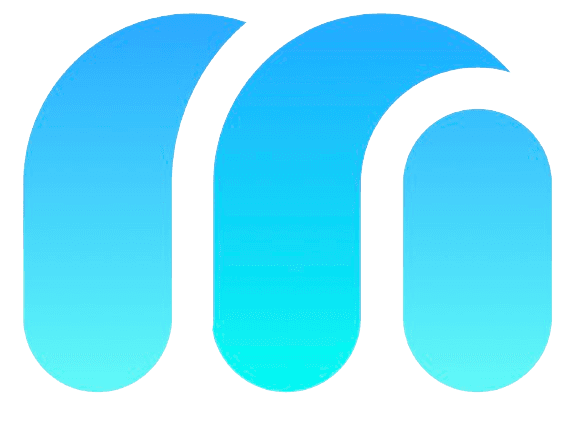Top Digital Products to Sell in 2025

Janis | Audience Monetize
01.01.2025
•
5 min read



Selling digital products continues to be one of the highest-leverage opportunities for creators, service providers, and solopreneurs. You can build once and sell infinitely-no inventory, no logistics, no customer service tickets for damaged packages.
And unlike physical products, they scale with zero marginal cost.
Whether you're an artist, educator, consultant, or developer, digital products let you turn your expertise into revenue without needing a team or warehouse.
Here’s why this model is so effective in 2025:
Minimal overhead
Global reach
Recurring revenue potential
Full control of pricing, delivery, and promotion
But not all digital products are created equal. Below are the top categories you should consider this year-each one proven, scalable, and suited to different creator types.
All of them are good-but only some of them create true transformation. And in an age of unlimited information, people don’t just want content. They want accountability.
That’s why the highest leverage path often leads to coaching programs and mentorship offers. But first, here’s the full spectrum of options:
1. Online Courses
Online courses continue to dominate the digital product space. They let you package expertise into a scalable format and sell to thousands without needing to teach live.
But here’s the nuance: information is abundant. Most buyers don’t struggle to find content. They struggle to use it. Completion rates are low. Transformation often requires support.
Pros:
High margins
Great for thought leadership
Fully automated delivery possible
Cons:
Crowded market
Low completion rates without support
Easy to pirate or undervalue
If you’re selling courses in 2025, they should feed into a higher-touch offer-like a coaching container or mentorship program-where people can apply what they learn with guidance.
2. eBooks
EBooks are great lead products or low-ticket offers. You can write them quickly and sell or bundle them across platforms.
Pros:
Fast to produce
Great for authority-building
Repurposes existing content
Cons:
Low perceived value
Not interactive
Rarely leads to real behavior change
Use eBooks as part of a funnel. But if you’re serious about results (and revenue), they should lead to something with higher touch: a coaching call, a cohort, or a 1:1 audit.
3. Templates
Templates help people skip thinking. They save time and reduce friction, which makes them extremely sellable.
Pros:
High demand in productivity and design niches
Easily bundled and upsold
Evergreen utility
Cons:
Easy to copy
Difficult to protect IP
Low transformation on their own
Templates work best when paired with a walkthrough, course, membership, or coaching program that shows how to customize and implement them properly.
4. Memberships/Paid communities
Memberships turn followers into community members. But retention is the hard part. Most churn happens because members have a flash of inspiration/hype - so they quickly consume but don’t act long-term.
Pros:
Recurring revenue
Builds community and trust
Strong LTV if done right
Cons:
Constant content pressure
Churn risk
Low transformation without structure
In 2025, you shouldn't focus only on offering content inside your membership platforms. Focus on offering accountability loops, regular check-ins, and group coaching calls.
5. Stock Media (Photos, Video, Audio)
Stock content is useful for creators and businesses who need consistent assets. But monetization depends on niche, volume, and platform exposure.
Pros:
Set it and forget it
Passive revenue potential
Wide range of formats
Cons:
High competition
Platform fees
No buyer relationship
6. Checklists & Guides
These sell because they reduce overwhelm. So you’re not just giving information - you’re giving structure.
Pros:
Fast to create
Easy to sell as bundles
Supports other products
Cons:
Low standalone value
High commoditization
Not enough for lasting change
Again, these shine when integrated into a program. A checklist is more powerful when it’s part of a larger system that includes coaching, review, and refinement.
7. Digital Services → Productized Offers
This is the bridge from 1:1 to scalable income. If you already do something manually, package it as a repeatable offer with clear scope and outcome.
Pros:
High-ticket potential
Directly solves problems
Builds deep trust with clients
Cons:
Still requires time (unless automated)
Delivery risk if not scoped tightly
Doesn’t scale without systems
Best next step? Wrap your service into a mentorship program. Combine education with direct help. People want support as they implement-not just templates or theory.
The takeaway for 2025:
People want skills. But more than that, they want structure.
More than information, they want accountability.
More than content, they want connection.
So while digital products like courses, guides, and templates are great entry points, the real leverage-and the real income-comes from building:
Mentorship containers
Group coaching programs
High-touch educational experiences
That’s where transformation happens. That’s where clients get results. And that’s where your brand stands out in a crowded market. Don’t just sell information.
Sell outcomes.
Sell support.
Sell the system that helps people actually do the thing they keep putting off.
Peace out ✌️
———
Got questions or comments? Let me know on LinkedIn.
Selling digital products continues to be one of the highest-leverage opportunities for creators, service providers, and solopreneurs. You can build once and sell infinitely-no inventory, no logistics, no customer service tickets for damaged packages.
And unlike physical products, they scale with zero marginal cost.
Whether you're an artist, educator, consultant, or developer, digital products let you turn your expertise into revenue without needing a team or warehouse.
Here’s why this model is so effective in 2025:
Minimal overhead
Global reach
Recurring revenue potential
Full control of pricing, delivery, and promotion
But not all digital products are created equal. Below are the top categories you should consider this year-each one proven, scalable, and suited to different creator types.
All of them are good-but only some of them create true transformation. And in an age of unlimited information, people don’t just want content. They want accountability.
That’s why the highest leverage path often leads to coaching programs and mentorship offers. But first, here’s the full spectrum of options:
1. Online Courses
Online courses continue to dominate the digital product space. They let you package expertise into a scalable format and sell to thousands without needing to teach live.
But here’s the nuance: information is abundant. Most buyers don’t struggle to find content. They struggle to use it. Completion rates are low. Transformation often requires support.
Pros:
High margins
Great for thought leadership
Fully automated delivery possible
Cons:
Crowded market
Low completion rates without support
Easy to pirate or undervalue
If you’re selling courses in 2025, they should feed into a higher-touch offer-like a coaching container or mentorship program-where people can apply what they learn with guidance.
2. eBooks
EBooks are great lead products or low-ticket offers. You can write them quickly and sell or bundle them across platforms.
Pros:
Fast to produce
Great for authority-building
Repurposes existing content
Cons:
Low perceived value
Not interactive
Rarely leads to real behavior change
Use eBooks as part of a funnel. But if you’re serious about results (and revenue), they should lead to something with higher touch: a coaching call, a cohort, or a 1:1 audit.
3. Templates
Templates help people skip thinking. They save time and reduce friction, which makes them extremely sellable.
Pros:
High demand in productivity and design niches
Easily bundled and upsold
Evergreen utility
Cons:
Easy to copy
Difficult to protect IP
Low transformation on their own
Templates work best when paired with a walkthrough, course, membership, or coaching program that shows how to customize and implement them properly.
4. Memberships/Paid communities
Memberships turn followers into community members. But retention is the hard part. Most churn happens because members have a flash of inspiration/hype - so they quickly consume but don’t act long-term.
Pros:
Recurring revenue
Builds community and trust
Strong LTV if done right
Cons:
Constant content pressure
Churn risk
Low transformation without structure
In 2025, you shouldn't focus only on offering content inside your membership platforms. Focus on offering accountability loops, regular check-ins, and group coaching calls.
5. Stock Media (Photos, Video, Audio)
Stock content is useful for creators and businesses who need consistent assets. But monetization depends on niche, volume, and platform exposure.
Pros:
Set it and forget it
Passive revenue potential
Wide range of formats
Cons:
High competition
Platform fees
No buyer relationship
6. Checklists & Guides
These sell because they reduce overwhelm. So you’re not just giving information - you’re giving structure.
Pros:
Fast to create
Easy to sell as bundles
Supports other products
Cons:
Low standalone value
High commoditization
Not enough for lasting change
Again, these shine when integrated into a program. A checklist is more powerful when it’s part of a larger system that includes coaching, review, and refinement.
7. Digital Services → Productized Offers
This is the bridge from 1:1 to scalable income. If you already do something manually, package it as a repeatable offer with clear scope and outcome.
Pros:
High-ticket potential
Directly solves problems
Builds deep trust with clients
Cons:
Still requires time (unless automated)
Delivery risk if not scoped tightly
Doesn’t scale without systems
Best next step? Wrap your service into a mentorship program. Combine education with direct help. People want support as they implement-not just templates or theory.
The takeaway for 2025:
People want skills. But more than that, they want structure.
More than information, they want accountability.
More than content, they want connection.
So while digital products like courses, guides, and templates are great entry points, the real leverage-and the real income-comes from building:
Mentorship containers
Group coaching programs
High-touch educational experiences
That’s where transformation happens. That’s where clients get results. And that’s where your brand stands out in a crowded market. Don’t just sell information.
Sell outcomes.
Sell support.
Sell the system that helps people actually do the thing they keep putting off.
Peace out ✌️
———
Got questions or comments? Let me know on LinkedIn.
5-Day Email Course
Other blogs you might like
I yap about online offers, info products, audience monetization, sales, and psychology:
I yap about online offers, info products, audience monetization, sales, and psychology:
I yap about online offers, info products, audience monetization, sales, and psychology:



